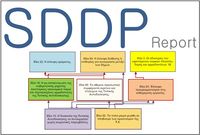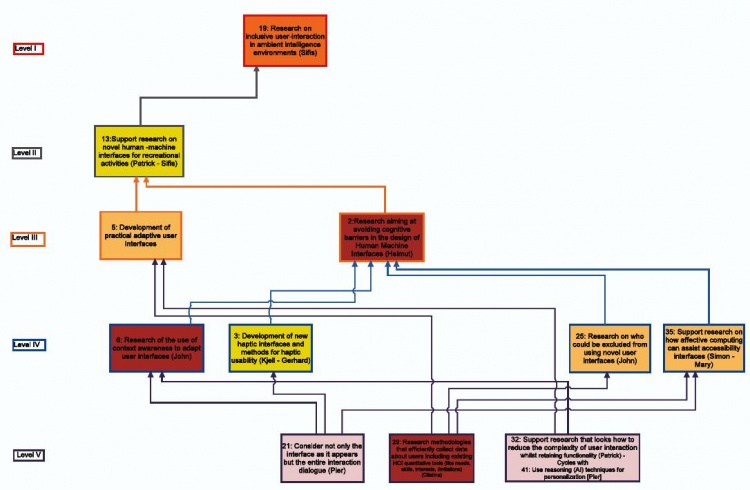SDDP CARDIAC II: Influence Tree for the Road-map on inclusive HCI research and development priorities for WP3: Difference between revisions
No edit summary |
No edit summary |
||
| (4 intermediate revisions by the same user not shown) | |||
| Line 1: | Line 1: | ||
{{SDD_Report | {{SDD_Report | ||
|acronym=SDDP Local Authorities Troodos | |acronym= SDDP Local Authorities Troodos | ||
|book_image= SDDP_Report_Image.jpg | |book_image=SDDP_Report_Image.jpg | ||
|report_title=Influence Tree for the Road-map on inclusive HCI research and development priorities for WP3 | |report_title= Influence Tree for the Road-map on inclusive HCI research and development priorities for WP3 | ||
|Triggering_Question=What type of research is missing that could facilitate development of inclusive HCI? | |project= [[CARDIAC]] | ||
| | |Triggering_Question= What type of research is missing that could facilitate development of inclusive HCI? | ||
|author=[[Yiannis Laouris]] <br> [[Georgina Siitta Achilleos]] | |location= San Sebastian,Spain | ||
|editor= [[Patrick Roe]] <br> [[Julio Abascal]] <br> [[Sifis Klironomos]] | |dates= 28th - 29th June 2011 | ||
|total_duration=2 days | |LeadFacilitator= [[Yiannis Laouris]] <br> [[Georgina Siitta Achilleos]] <br> [[Tatjana Taraszow]] | ||
|stats=Participants=22 <br> Number of ideas=75 <br>Number of Clusters=18 <br> Ideas received Votes=50 <br> Ideas on MAP R=33 <br>Spreathink ST=64% | |AsFacilitator= | ||
| | |author= [[Yiannis Laouris]] <br> [[Georgina Siitta Achilleos]] | ||
|link=[ | |editor= [[Patrick Roe]] <br> [[Julio Abascal]] <br> [[Sifis Klironomos]] | ||
|total_duration= 2 days | |||
|stats= Participants=22 <br> Number of ideas=75 <br>Number of Clusters=18 <br> Ideas received Votes=50 <br> Ideas on MAP R=33 <br>Spreathink ST=64% | |||
|isbn= | |||
|link= [[Media:CARDIAC_InclusiveHCI_d2_SanSebastian.pdf|Download D2.2 Report]] | |||
}} | }} | ||
Latest revision as of 05:56, 17 January 2024
|
Executive Summary
This report has been developed in the context of the CARDIAC project (FP7 - Coordinating Action: Grant Agreement 248582). The goal of the project is to create a platform that can bring together the various stakeholders in the area of accessible and assistive ICT with a view to identifying Research & Development gaps and emerging trends and generating a research agenda roadmap. The Lead facilitator of the SDDSM, Dr. Yiannis Laouris, served as the person coordinating the process. Cogniscope3 operator was Mrs. Georgina Siitta Achilleos. There were 22 people participating in this SDDSM, one of whom participated through videophone. The workshop was facilitated by Yiannis Laouris (CNTI), Georgina Siitta Achilleos and Tatjana Taraszow (CNTI).
Following a two-month consultation with the stakeholders via the Cardiac Wikispace1, offered 74 responses to the triggering question utilizing the Wiki.
The Triggering Question (TQ) was
What type of research is missing that could facilitate development of inclusive HCI?
Clusters
In response to the TQ, the 22 participants came up with 75 characteristics, which were categorized in the following clusters:
- Beyond HCI
- Cognitive Interaction
- Innovative User Interfaces
- Accessibility resource materials
- Adaptive User Interfaces
- Methodologies
- Knowledge sharing
- n/a
- n/a
- Universal Remote Console
- Ubiquitous Computing
- Simplification
- Social Interaction
- Human Factors
- n/a
- Research on adoption of accessibility
- User profiles
- Design Tools
Voting
After having clustered all their ideas, the participants cast votes for the five ideas that they each felt were most important. Out of the population of 75 proposed ideas, 50 received one or more votes. In order to enrich the results, i.e. identify the participants’ perceived degree of importance among the twenty ideas that received one vote each a second round of voting took place. Here, the participants cast votes for the five ideas that they each felt were most important of those ideas that received one vote during the first round.
Structuring
The results of both voting procedures were used in order to select ideas for the following structural process. The participants were able to structure 33 out of the 50 ideas that received votes. This includes all ideas that received two and more votes (30 ideas) plus those ideas that initially received one vote and received the most votes during the second voting cast (3 ideas).
Tree of Influences
The resulting “Tree of Influences” demonstrates the most influential ideas, which have
the greatest impact. The tree is made up of 5 levels of influence, 33 ideas and 101 connections and it is presented below.
According to the participants of this workshop, the characteristics appear to be the most influential were:
- Characteristic #21, Consider not only the interface as it appears but the entire interaction dialogue
- Characteristic #29, Research methodologies that efficiently collect data about users including existing HCI quantitative tools (like needs, skills,interests, limitations)
- Characteristic #32, Support research that looks how to reduce the complexity of user interaction whilst retaining functionality
- Characteristic #41, Use reasoning (AI) techniques for personalization
The participants had time to discuss and reflect on the influence map and in general agreed that the arrows in the map made sense to them. The structured dialogue process empowered the consortium team to identify the most influential research that is missing that could facilitate development of inclusive HCI and to assign to different members the role of carrying the discussions forward via the CARDIAC Wikispace and starting the analysis of how implement the various mechanisms.
In sum, the application of the SDDSM process supported the Consortium to identify potential mechanisms that ensure successful technology transfer in accessible and assistive ICT products and services.

